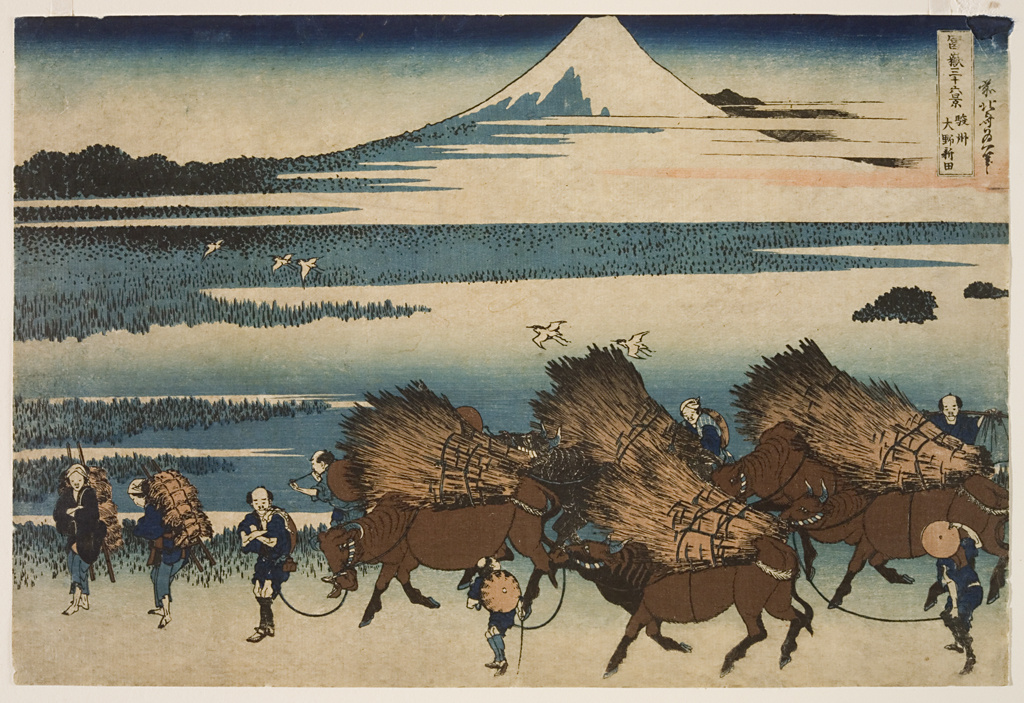Sacred Space and Japanese Art at the Spencer Museum of Art
Entry by Eunho Park
Katsushika Hokusai, one of the most prolific print artists during the Edo period (1615–1868), is well known for his depictions of Mount Fuji. This print is one in his series of Thirty-six Views of Mount Fuji, which illustrates everyday life in different seasons from different places around Mount Fuji. In the print, several male farmers lead large oxen while two women carry reeds on their backs during a harvest. These figures are set against the landscape of a towering Mount Fuji that touches the top edge of the picture in the blue sky.
This print juxtaposes people’s daily lives with the majesty of Mount Fuji—one of the most sacred places in Japan. While the Japanese farmers pictured go about their daily chores, Mount Fuji rises above surrounded by calm clouds obscuring its right slope in a peaceful atmosphere. The vast expanse of marsh with herons flying above it creates a division between humanity and the grandeur of nature. Mount Fuji appears to be an unattainable and untouchable abode of divinity. In addition to a magnificent mountain and national symbol of Japan, Mount Fuji has also been considered a sacred place that is inspiring to worshippers as well as artists.

